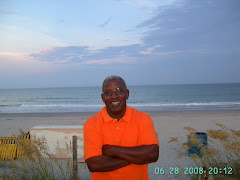Subscribe to:
Post Comments (Atom)
Welcome to Camping in Color
This Blog site is designed to bring you the joys of camping and the outdoors, from an African American perspective.
If you enjoy this blog then follow us with Google Friend Connect
Subscribe To Camping in Color via Email
Translate This Blog
Blog roll
Blog Archive
About Us

- Camping in Color
- An African American couple, with over thirty years of family camping experience. From north to south, tents to campers, simple to superb... Back in the 70's we began camping as young adults. We became hooked! While we were reminded of our childhood experiences, this was different. It became our cabin in the woods, but without the mortgage. Our family would pack up after work on Friday and head to the lake. We would swim, fish, and ride bikes together, and my favorite the campfire. We went home each weekend feeling refreshed, and with great memories of the time we spent together. Leaving being so hard to do. Soon others came with us, nieces, nephews, friends and other family. All of whom still camp today and take their own families. We are presenting this with the goal of infusing family with the appreciation of nature. With so much technology and desensitizing information. We hope this will awaken your senses and motivate you to Camp in Color. The Publishers of Camping in Color The Camping Consultants Contact us at campingincolor@gmail.com
How to install lantern mantles
How to scale and clean a panfish
How to filet and skin a fish
How to start a campfire
Lanterns and lantern mantles (part 2)
Camping in Color by The Camping Consultants is licensed under a Creative Commons Attribution-Noncommercial-Share Alike 3.0 United States License.
Based on a work at campingincolor.blogspot.com.
Permissions beyond the scope of this license may be available at http://campingincolor.blogspot.com.
Apture
Subscribe Now:
Labels
- African American campers
- Camping blogs
- Blacks and Camping
- camping
- camping 101
- camping consultant
- fishing
- anastasia state park
- campfire
- camping memories
- fall camping
- family camping
- national parks
- nature
- 17 year old eagle scout
- 6 year old gets suspended
- H.R. 2054
- Ken Burns
- Nature deficit disorder
- No camper left behind
- Shelton Johnson
- St. Augustine
- Thirty Years and Still Excited
- Yosemite
- adhd
- beaches
- camp lighting
- camping excitement
- camping knife
- camping memories.camping consultant
- camping popularity
- cleaning panfish
- family bonding
- filet fish
- how to start a campfire
- inner city kids camping
- lanterns
- moonlit walks
- obesity
- ocean camping
- outdoors
- pop up campers
- quality family time
- relaxation
- scaling fish
- school rules
- skinning fish
- smores
- star gazing
- tent camping
- travel trailers
- welcome to camping in color
- zero tolerance







I found your blog via the NYT article. I grew up camping and love to meet other people who enjoy it as much as I do. You have some good material here, but I did notice your YouTube video on how to start a fire has some problems. The video says it's 9:43 long, but the second half appears to be a repeat of the first half without sound. It would also be nice to see you discuss fire safety. Specifically how to pick/clear a spot to make a fire if there isn't a fire pit, how to put out a fire properly, and how to put an unburned stick in the fire after it's been put out (if a forest fire starts in the area, this will show that your fire was out). It would also be useful to show people how to make a fire after a rain. If you plan to cook on a fire but you can't get one started (and don't have a backup plan), it can be a pretty bad trip.
ReplyDeleteI enjoyed your article. I prefer to spend the night in a campground so that I can have a fire and just relax, but I also stealth camp when necessary. Since I do a lot of biking on rural bike trails, I found the easiest stealth camping is to look for a secluded level spot just off the trail. When the railroads first put in the rail lines, they usually included a generous right of way on either side of the tracks. When the rail lines get converted to bike trails, these right of ways usually remain so you can usually find a comfortable place to camp that’s not on private property. I’ve also camped in rural cemeteries, which tend to be secluded and beautiful; they also frequently have water.
ReplyDeleteThis information is really worthy and please provide me some new content along with best bookmarking sites .. and please keep posting more information.
ReplyDeletebest camping tent for two
Really very interesting and very valuable information about the outdoor activities well done..
ReplyDeleteoutdoor activities